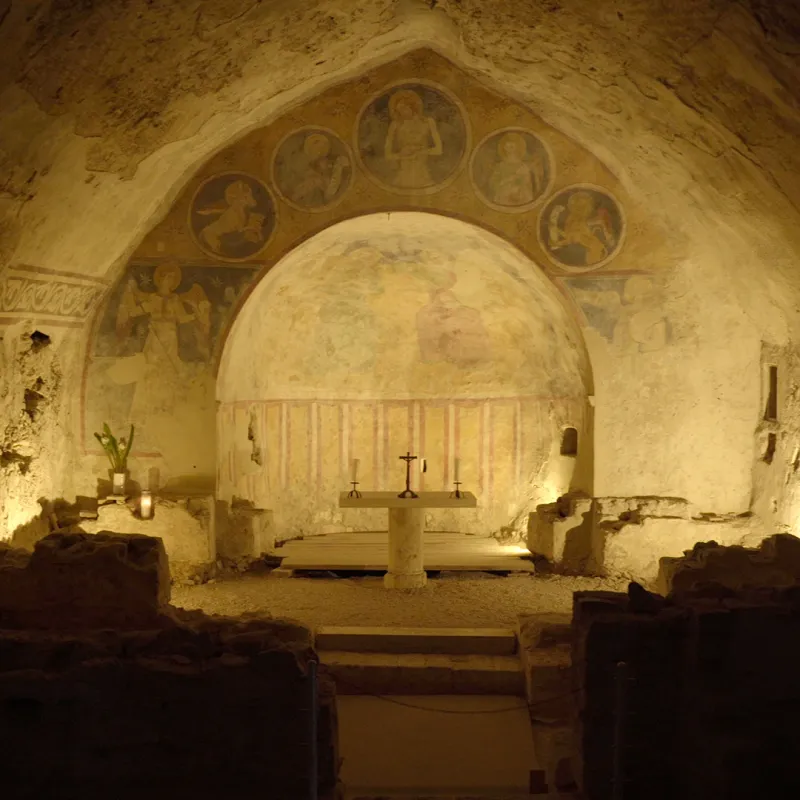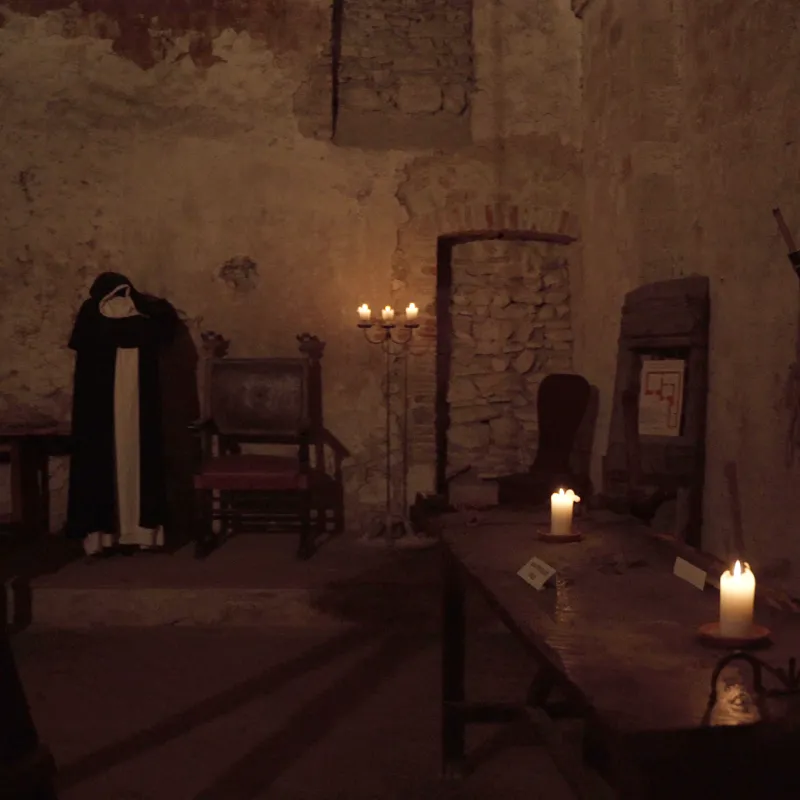Narni Underground, between history and mystery
"Brought to light" after a group of young people from Narni fortuitously discovered it in 1979, this treasure constitutes extraordinary historical documentation. Narni Underground is a journey through underground corridors and passages, with several openings to the outside. Following this path, accompanied by expert guides, visitors can discover artefacts and evidence from different historical periods.
The tour, which starts at the convent complex of San Domenico, is surprising from the very beginning. The small chapel carved out of rock that one first encounters is a precious "piece of art" with its frescoed walls, now restored, dating back to the 13th-15th centuries, including one depicting "Archangel Michael piercing the dragon."
Moreover, the glass floor of this room allows the eye to reach the ancient foundations that have re-emerged through excavations. An opening in the masonry leads to a room where a cistern for collecting rainwater was carved out of the rock in Roman times.


Crossing a long corridor, visitors find themselves enveloped in an atmosphere full of suspense inside what was once the Tribunal of the Holy Inquisition. In this room, interrogations for those accused of heresy took place. The room is also called the Torture Chamber for the punishments that were inflicted here using the torture instruments, copies of which are on display. It might look like a perfect film set but in reality it is a tangible snippet of history, narrated by the testimonies of the condemned as well. These are represented by numerous graffiti they left on the walls of the small cell where they were locked up. These messages, expressed in codes to avoid detection by the inquisitors, most of which have now been deciphered, bear witness to the dramatic experiences endured.
The itinerary continues in the basement of the Church of Santa Maria Impensole, where, in addition to two cisterns from the Roman era, one can see the structures of the original 8th-century church above which the Romanesque building was later constructed. The last stop on the itinerary is the large early medieval cistern, called Lacus, located beneath Piazza Garibaldi.